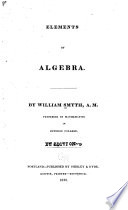 | William Smyth - Algebra - 1830 - 278 pages
...power or square of the sum of two quantities contains the square of the first quantity, plus double the product of the first by the second, plus the square of the second. Thus, (7 + 3) (7 + 3) or, (7 + 3)' = 49 + 42 + 9 = 100 So also (5 a2 + 8 a2 6)2 = 25 a6 + 80 <tb +... | |
 | Charles Davies - Algebra - 1835 - 378 pages
...(a+b)=a3+'2ab+b3. That is, the square of the sum of two quantities is composed of the square of the first, plus twice the product of the first by the second, plus the square of the second. Thus, to form the square of 5a3+8a3i, we have, from what has just been said, 2d. To form the square... | |
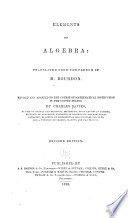 | Algebra - 1838 - 372 pages
...known principles, That is, the square of the sum of two quantities is equal to the square of the first, plus twice the product of the first by the second, plus the square of the second. Thus, to form the square of 5a"-\-8a2b, we have, from what has just been said, 2d. To form the square... | |
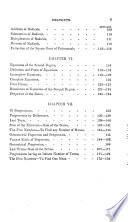 | Charles Davies - Algebra - 1839 - 272 pages
...(a+b)=a? + 2ab+b\ That is, the square of the sum of two quantities is equal to the square of the first, plus twice the product of the first by the second, plus the square of the second. 1. Form the square of 2a+36. We have from the rule (2a + 36)2 — 4a2 + 12ab + 962. 2. (5a6+3ac)2 =... | |
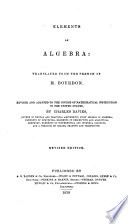 | Algebra - 1839 - 368 pages
...is, the square of the difference between two quantities is equal to the square of the first, minus twice the product of the first by the second, plus the square of the second. Thus, (7o3i3— 12ai3)3=49o4i4— 168a3i5+144a3i6. 3d. Let it be required to multiply a-\-b by a —... | |
 | Charles Davies - Algebra - 1839 - 264 pages
...third forms, we see that the first member in each contains two terms of the square of a binomial, viz : the square of the first term plus twice the product of the 2nd term by the first. If, then, we take half the coefficient of x, viz : p, and square it, and add... | |
 | Roswell Park - Best books - 1841 - 722 pages
...by x + a, we shall have (x + a)3 = x3 + 2 ax + a' ; that is, the square of a binomial, is made up of the square of the first term, plus twice the product of the two terms, plus the square of the last term. This suggests the rule for extracting the square root... | |
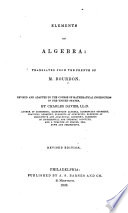 | Charles Davies - Algebra - 1842 - 368 pages
...2 +2ai+i 2 . That is, the square of the sum of two quantities is equal to the square of the first, plus twice the product of the first by the second, plus the square of the second. Thus, to form the square of 5o 2 +8a 2 i, we have, from what has just been said, (5a 2 + 8a 2 i) 2... | |
 | Charles Davies - Algebra - 1842 - 284 pages
...third forms, we see that the first member in each contains two terms of the square of a binomial, viz : the square of the first term plus twice the product of the 2nd term by the first. If, then, we take half the coefficient of x, viz : p, and square it, and add... | |
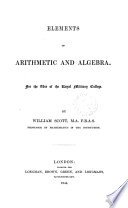 | William Scott - Algebra - 1844 - 568 pages
...(a+4+c+</)'=a2+2aA+42+2(a+4)c+c2+2(a+4+c)a"+d!, The square of a polynomial expression is consequently composed of the square of the first term, plus twice the product of the first term by the second, plus the square of the second term, plus twice the product of the sum of the first... | |
| |